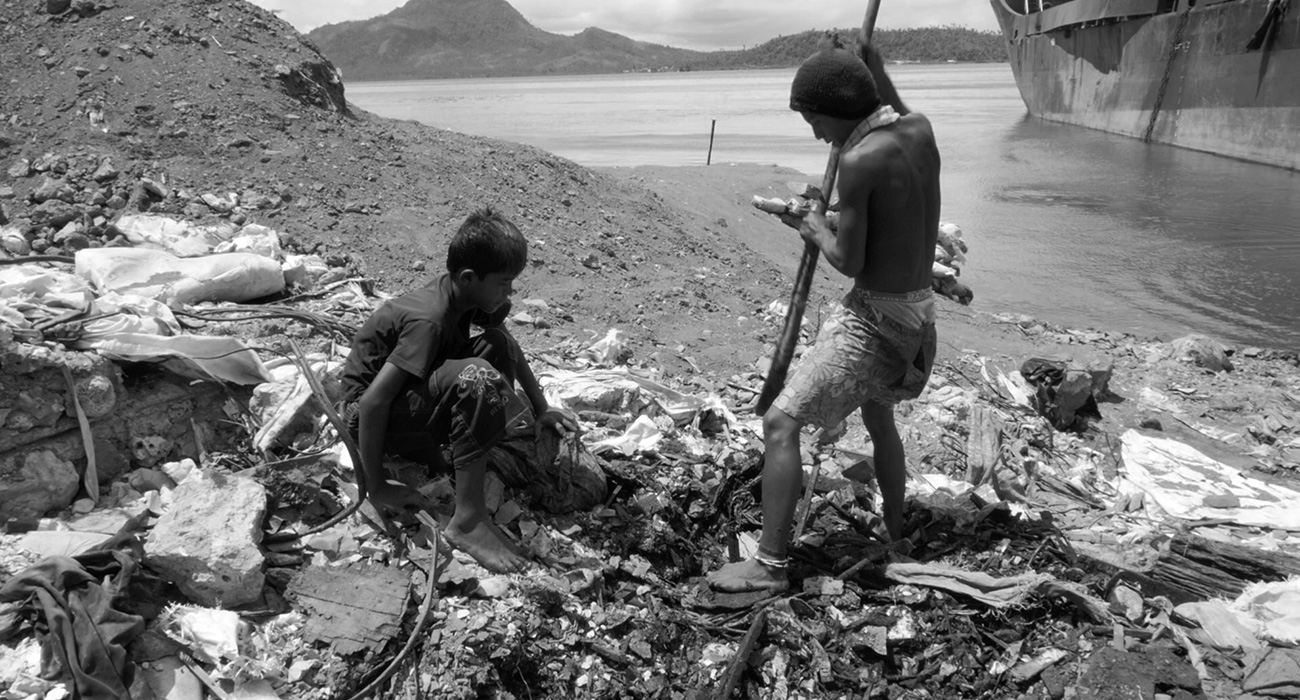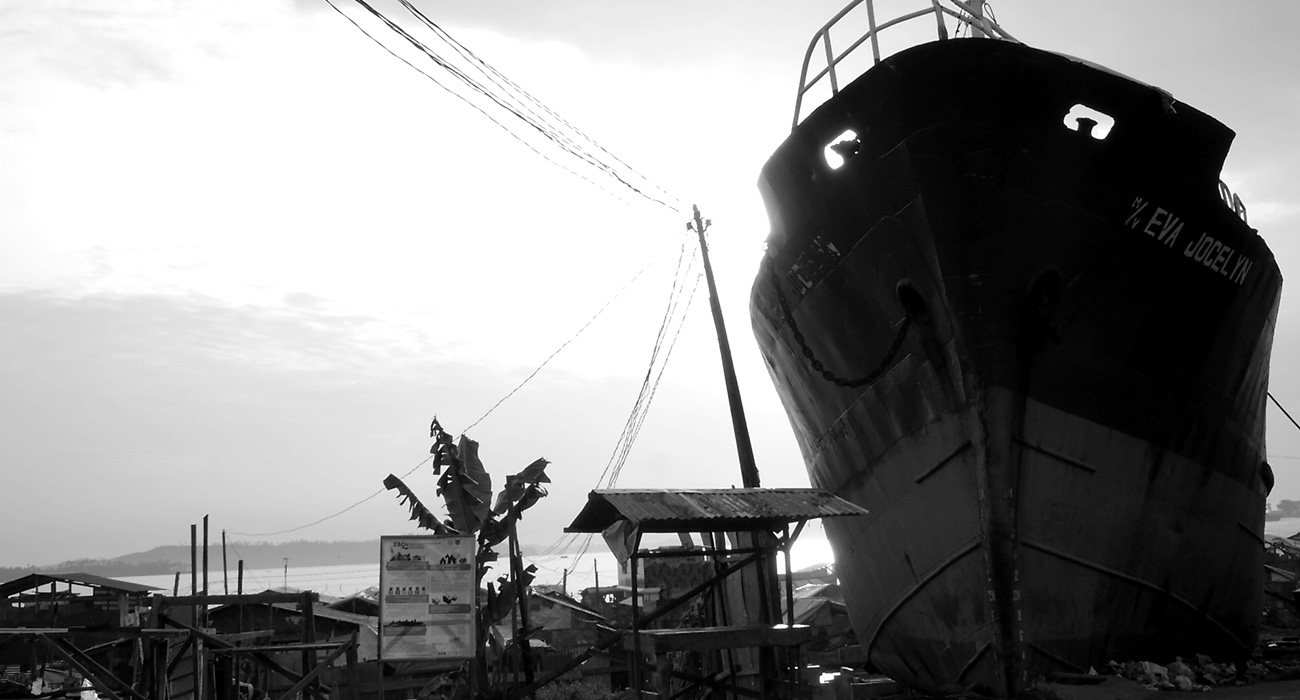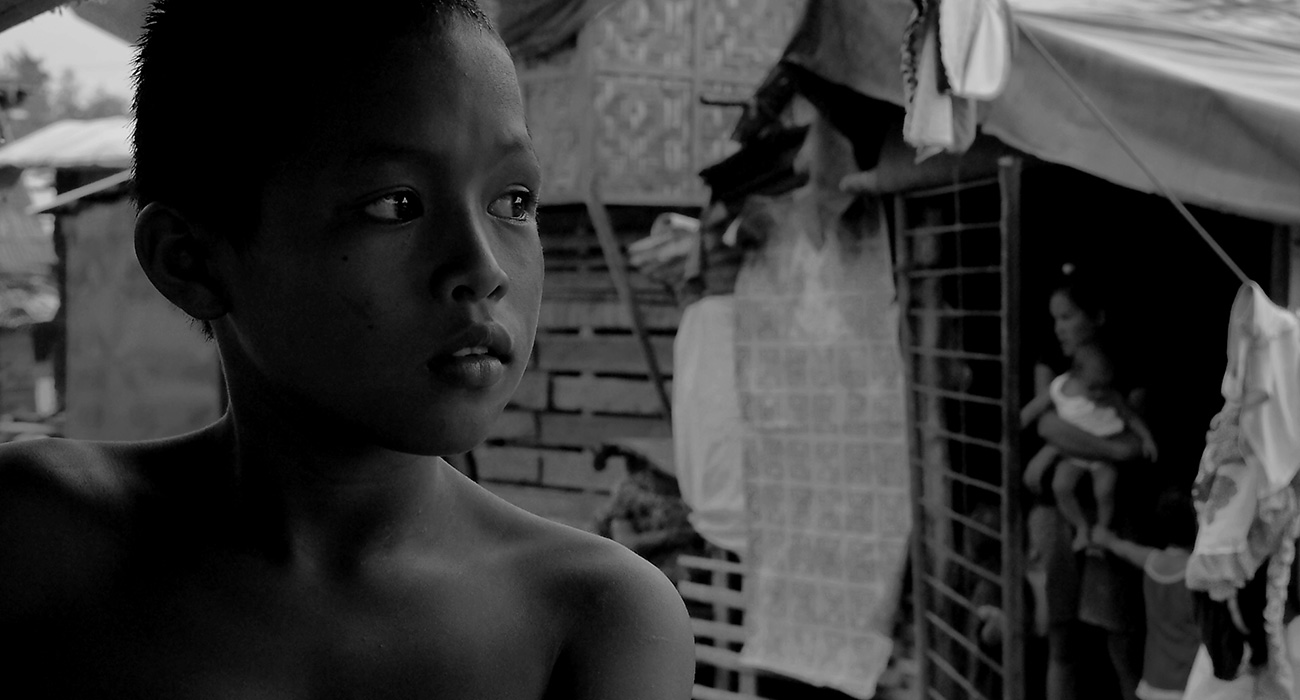“I would want them to see — to be witnesses.”
Another epic Lav Diaz film, Storm Children: Book One differs slightly in that this is a shorter film by his narrative standards. It is not unusual for his films to clock in at more four hours long but given that this feature, which recently had a run at the Melbourne International Film Festival, is a documentary with a running time of little more than two hours. When compared to most contemporary documentaries it is still a long film but it is an honest film.
“The more that I can show that I am just a witness to life, then, it’s better. My cinema would be more human,” director Diaz said.
Slow, ponderous and somewhat static, this is a very pure documentary shot in the way of Cinema Vértié or Direct Cinema from the 1950s and 60s. Very hands off and observational, no interviews, no voiceover nor narration, no directorial intervention (well not vocally anyway) — just lots of long, uncut, static shots and shot, of course, in the filmmakers lavish trademark black and white. All these techniques or lack of therein lend the film a very authentic feel. No lies, no manipulation, Storm Children: Book One is the real deal.
“It’s a decision. I would want my cinema to be invisible when I’m doing documentary. Yes, Direct Cinema,” he expressed.

The documentary takes place in a Manila recovering from the devastation of typhoon Yolanda, (Haiyan) in November 2013, an almighty storm that left over a million people homeless and thousands dead in her wake.
“Shooting Storm Children had put me in situation where I was being tortured every moment about experiencing reality, when oftentimes during the shooting, things can be just that forthright and sickening and it would hit you hard viscerally. At the same time there’s an emancipatory level to it as the experience purges your being.”
Storm Children: Book One as the title might suggest focuses on the children of Manila and their interaction with the carnage left behind. It is a slow, gradual observation of life in and amongst the wreckage left behind.
“It evolved on a sense. I didn’t have a concrete view of what I would find there the first time I went, and so ultimately, of course, once I set my sights on them already, these children of the storm, the vision became that of struggling to portray them truthfully and honestly. These are the main reasons why I tried hard not to manipulate the shots and the editing.”

There are bizarre visuals of huge ships run aground where ships should not normally be and the children play and scavenge around them. One mesmerising sequence in the documentary involves two boys digging under the roof of a buried structure, extracting objects of potential worth but more often than not coming up with useless trash. But there is a fascination that the next piece may be gold or its equivalent.
This is passive observation at its best and through the director’s beautiful sense of framing, it becomes a deep meditation, slow and sure. We witness the bizarre juxtaposition of nature’s fury against the ordinary of urban living. With no voice to guide and no music to cue it’s just you and what’s within the frame. This approach, though on the surface may seem slightly benign, actually is generous in giving the audience ample space and time to actively interpret. It makes for difficult viewing if you want to be given or are used to spoon feeding, but for the active viewer this film is a large arena in which to play.
“Doing this documentary is a responsibility. I love documentary [filmmaking] and have high regards [for] filmmakers who do honest works in this medium. The issue of responsibility and the process of discovery during the course of the shoots always creates an epiphanic effect on my being. I understand life more, or the reverse would happen — life’s mystery would deepen and it challenges me to dig deeper and do more.”

At the very least Storm Children: Book One is an archival unit of significance capturing a disastrous moment in Filipino history, something to reference in the future but this is short changing the filmmaker in a big way.
“It could be a series or a follow-through. I want to be very fluid about it. I have a lot of footage of the kids, not just the ones that were featured in Book One. Also, I’m going back there time and again to find them and continue shooting or just be with them and try my best to help them, feel them, talk to them, have coffee with them.”
It really is a celebration of the resilience of innocence battered in the face of adversity and very much it is another chapter in the art and times of this legendary filmmaker from the Philippines. In an age where contemporary documentary is becoming increasingly subjective and blurring the boundaries of truth and fiction in a stylistic hunt for entertainment and box office points there is some comfort to be had that the noble pursuit of the objective truth is still out there and in safe hands with this director.
